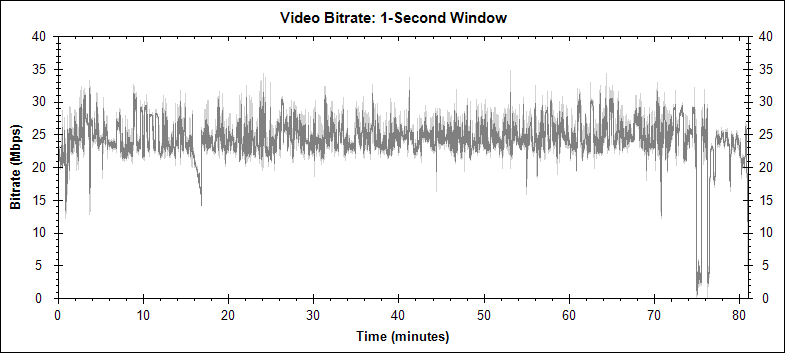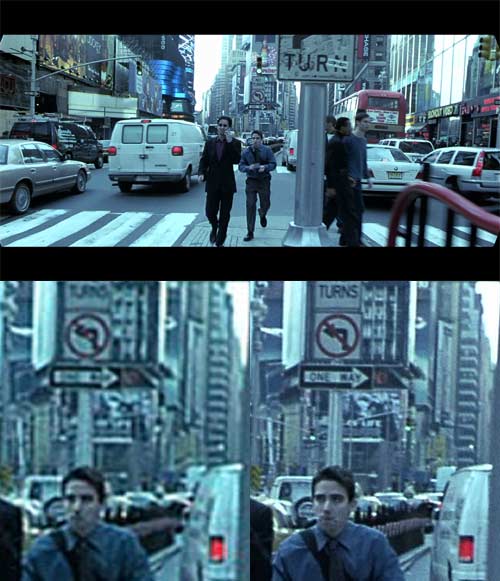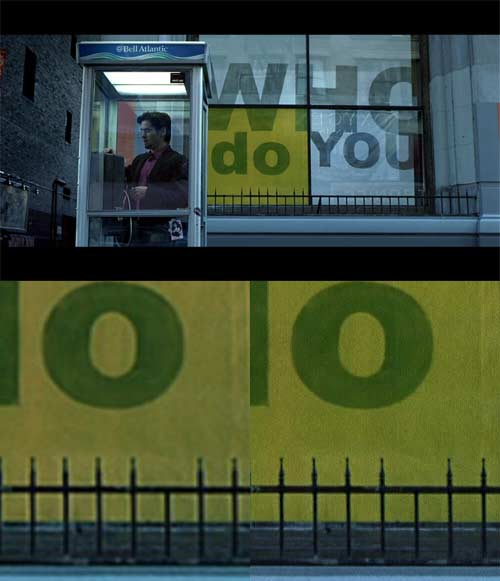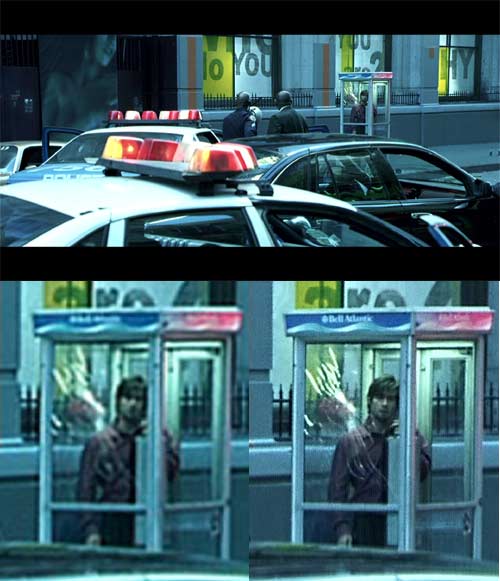 Picture:
Picture:  Sound:
Sound:  Extras:
Extras: 

Movie:  Picture:
Picture:  Sound:
Sound:  Extras:
Extras: 
 (Australian rating); Locked to Region B
(Australian rating); Locked to Region B
The following video bitrate graph was generated by BDInfo 0.5.2:

Here are some comparisons between the PAL DVD and the Blu-ray version of this movie.
At the top of each is the full frame (suitably shrunk down) used in the comparison, with a 250 pixel wide detail from the frame underneath. The left side is from the PAL DVD. The image was captured digitally from the disc, scaled up from its native 720 by 576 resolution to 1,024 by 576 (to present in the correct aspect ratio), and then, in order to be comparable to the Blu-ray version, from that to 1,920 by 1,080. The detail is from that last scaled version, and has not been rescaled again. The right side is from the Australian Blu-ray. This has not been scaled at all.
Different applications were used to capture the two frames, so I am not normally comfortable comparing the colour between the two, merely the detail and sharpness. For those visitors from NTSC lands, generally the PAL DVD is just a touch sharper than the NTSC DVD.
In fact, there seems to be very little difference between the two versions in colour, or in anything else that might have something to do with capture of the original film. There is no discernible difference in the framing (as there often is with catalogue movies), so I'm inclined to think that digital copy created in the original high definition telecine process that would have been conducted for the DVD (this would have been downconverted to PAL and NTSC resolutions afterwards) was retained and used for this Blu-ray.
Also worth noting is that as a fairly early Blu-ray release, this one used MPEG2 for the compression of the video, just like the original DVD. So the differences seem likely to be due solely to the differences in resolution and capacity. The size of the Blu-ray disc is 19.3GB, almost all of which is used for the movie (such as the paucity of special extras), and since it is a fairly short movie, this must have been enough to avoid visible MPEG2 artefacts.
The opening comparison is from the phone users' montage near the start of the movie. The differences are obvious:

As are the differences below. Good luck with the DVD if you're trying to read any of the text, work out that the fellow is holding a pen in his mouth, or generally make sense of the visual confusion:

One reason for the visual confusion in the DVD is, I think, the edge enhancement. See the pale halos around the metal rails. Such artefacts make it harder to see the subtle detail, which is sometimes overwhelmed by this noise. It is also possible to see texture on the yellow surface with the Blu-ray, but not with the DVD:

Now what's going on here? If you look really, realy closely at the following shot you may find just a little more legitimate detail in the Blu-ray version than the DVD, but it's nothing really to get excited about. Which makes it weird after the last three comparisons.
The explanation is simple: the actual film shot isn't all that sharp or detailed. Therefore there is little more detail or sharpness available for the Blu-ray to reveal:

Don't believe me that the last shot is all the film's fault? Then check out the following shot. This is from the same frame, but this time it is of the inset in that frame. There we see a much improved picture in the Blu-ray. So we can conclude the obvious: Blu-ray can't make film better than it is. All it can do is reveal more precisely what is on the film, good or bad:

Still, for most scenes in this film, the differences are more like the following frame:
